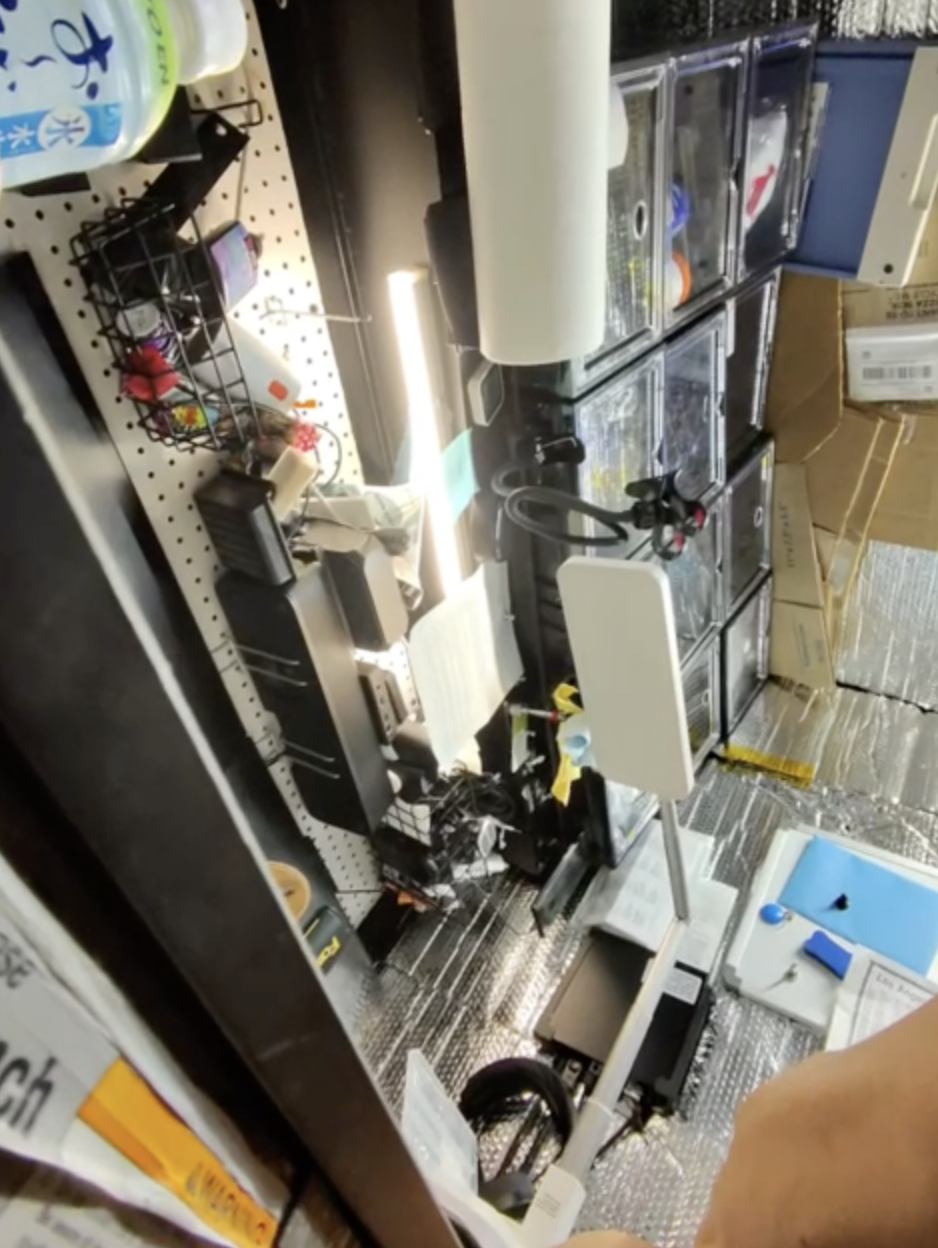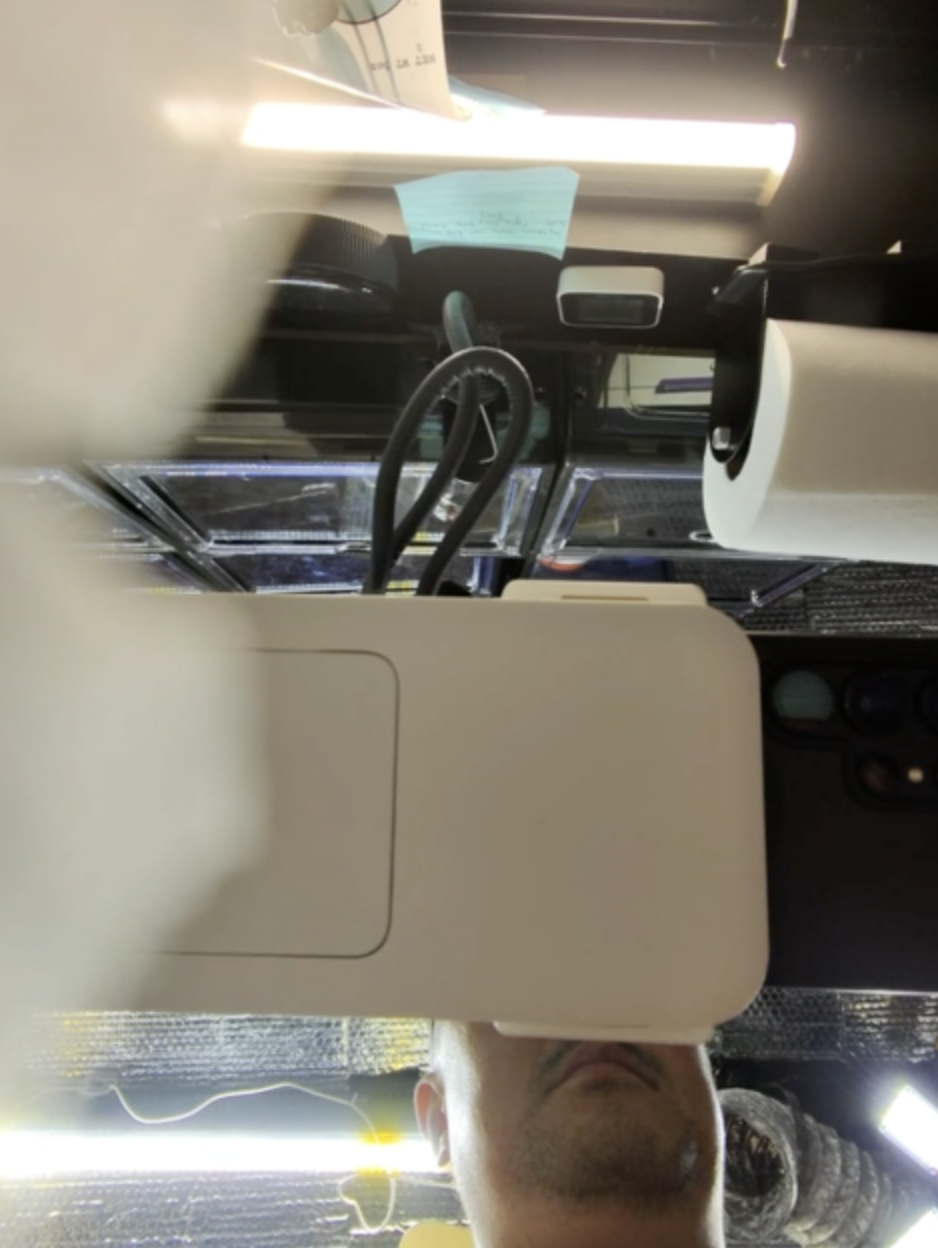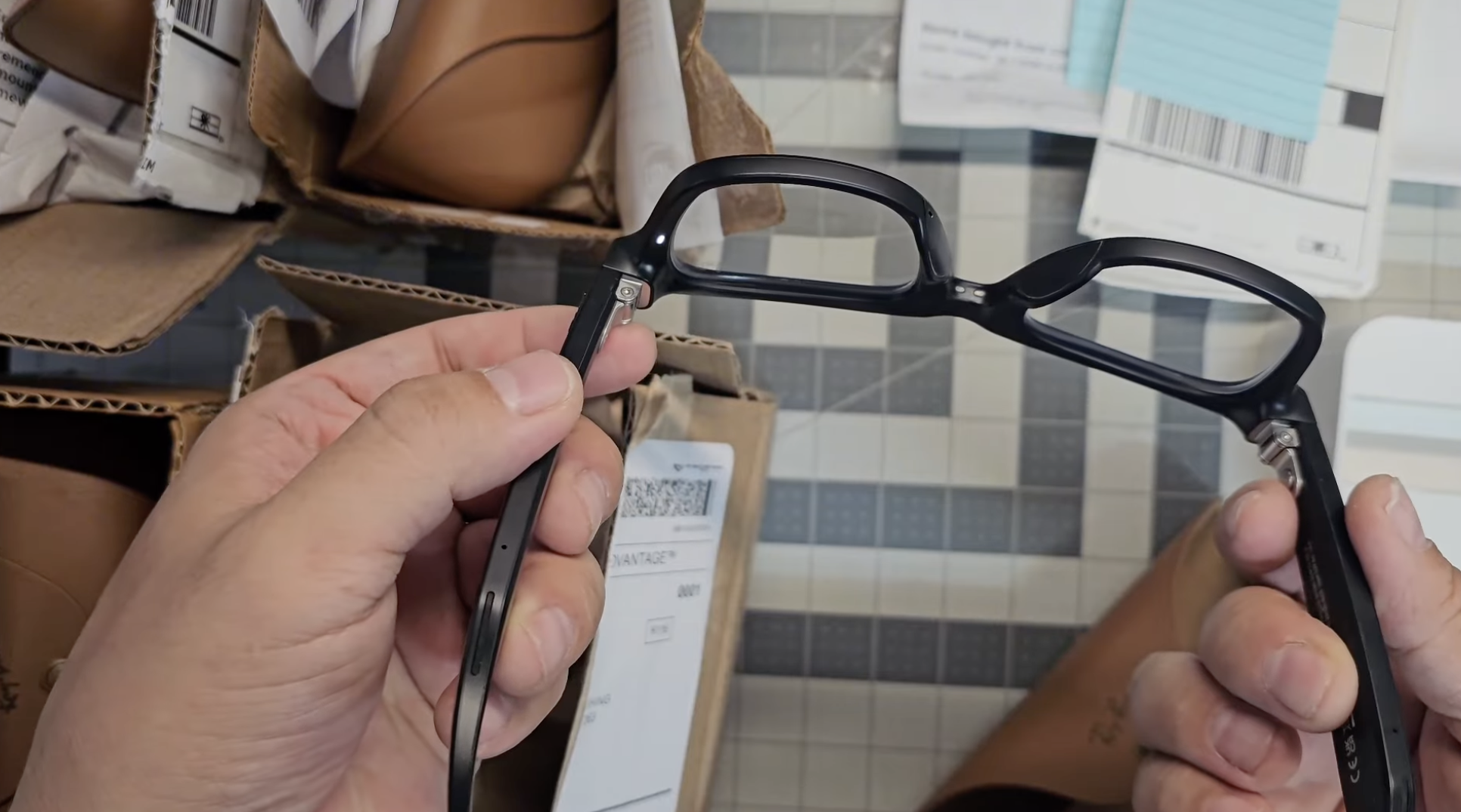
The sound of power tools screech in what looks like a workshop with aluminum bubble wrap insulation plastered on the walls and ceiling. A shirtless man picks up a can of compressed air from the workbench and sprays it. He’s tinkering with a pair of Meta Ray-Ban smart glasses. At one point he squints at a piece of paper, as if he is reading a set of instructions.
Meta’s Ray-Ban glasses are the tech giant’s main attempt at bringing augmented reality to the masses. The glasses can take photos, record videos, and may soon use facial recognition to identify people. Meta’s glasses come with a bright LED light that illuminates whenever someone hits record. The idea is to discourage stalkers, weirdos, or just anyone from filming people without their consent. Or at least warn people nearby that they are. Meta has designed the glasses to not work if someone covers up the LED with tape.
That protection is what the man in the workshop is circumventing. This is Bong Kim, a hobbyist who modifies Meta Ray-Ban glasses for a small price. Eventually, after more screeching, he is successful: he has entirely disabled the white LED that usually shines on the side of Meta’s specs. The glasses’ functions remain entirely intact; the glasses look as-new. People just won’t know the wearer is recording.
The implications of this man’s handiwork are that people can no longer assume someone wearing Meta’s Ray-Bans are not filming them even if the light is off. Earlier this month, University of San Francisco Department of Public Safety officials warned students about a man with Meta Ray-Ban glasses recording women on campus and posting the videos to pick-up artist social media accounts. Now imagine that activity but without any indication the Ray-Bans user is recording. How to disable the light is a common topic of conversation on Reddit, YouTube, and TikTok, with some users promising workarounds. 404 Media traced likely buyers of the modified Meta Ray-Bans to California, North Carolina, Texas, and overseas.
“I think most people want the LED light removed for the fact that people act more natural if they don’t have LED flashing light,” Kim told 404 Media in an email. “For example if I’m hav[ing] a disagreement out in public with someone, that person would most likely act a little different than normal if they knew they are recorded.”
0:00
One of 404 Media’s tests of the glasses.
404 Media purchased a pair of Kim’s modified glasses for verification purposes. The hobbyist charges $60 for the tweaks, or the full price of the glasses plus the modification fee if a user doesn’t own a pair. The description of Kim in his workshop comes from videos he seemingly recorded with our glasses while modifying them.
Kim’s work, for what it’s worth, is quite high quality. The only indication that the glasses had been modified at all was the fact that the seal on the box it came in was broken. But otherwise, the padding on the glasses’ arms were on, as was a plastic pull tab on the nose piece that the user is required to remove before testing it. The setup was the same as with unmodified glasses: 404 Media had to download the Meta AI app, connect it to an account, and login. The welcome tour, which consisted of a tutorial about how to take photos and videos with the glasses, noted that “the LED shows others when you’re taking photos, recording videos, or streaming.”
Another welcome screen said: “Get ready to capture! Respect people’s privacy,” and “Let that LED shine. The capture LED shows others when you’re taking photos, recording videos, or streaming so you won’t surprise them.” It recommends asking “Is it okay to capture here?” or “Are people around you aware?”. “If you’re unsure, just ask,” the screen says. Of course, on these modded glasses, the LED light did not turn on at all when taking photos or recording videos.
404 Media repeatedly tested the glasses to see if the LED turned on. In our tests, the front-facing recording LED did not illuminate while we were recording or taking pictures. A small light on the inside of the right arm of the glasses did illuminate, but was perceptible only very close to the glasses, in dark lighting, and to the person wearing the glasses.
For years Meta Ray-Ban users have been searching for ways to film others without them knowing. Reasons on various Reddit threads range from an attorney wanting to record signatures; filming concerts; or the light distracting their baby when trying to film them. Another Redditor asked “My horny friends interested in spying on girls that are out of his league.. what’s the best way to hide the flash when he’s horny and wants to start recording?” Many of the Meta Ray-Ban users post disingenuous comments such as “thousands of people use phone camera without any permission,” ignoring the fact that it is very obvious when someone is filming with their phone, given they are typically holding the device up. In a Meta whitepaper, the company says “The LED signals when it matters most: Bystanders can trust that when they see the LED is on, users are actively capturing photos or videos for later.”


Screenshots from videos included on the glasses.
Those Reddit threads also show users experimenting with different methods for blocking or disabling the LED while still being able to record, including covering the camera with your hand for a second before filming, or puncturing the LED.
Other people have taken Meta’s Ray-Bans and combined them with off-the-shelf technology to instantly dox strangers. Last year 404 Media reported that two Harvard students, AnhPhu Nguyen and Caine Ardayfio, married the glasses with a facial recognition service and people search sites to pull up information about people they looked at, including their home address, phone number, and family members. The pair tried the tech on real, unsuspecting people in public.
For his approach, Kim said he was “in essence, just disabling LED with drill.”
A Meta spokesperson told 404 Media in an email “trying to intentionally cover the LED capture light, disable it or otherwise tamper with the glasses” is a violation of Meta’s terms of service.
“The Capture LED is there for a reason,” the spokesperson continued. “It lets others know when you use your glasses to take photos and record videos for your gallery or streaming. If the LED is covered, you’ll be notified to clear it. We’ve made tangible improvements to bystander privacy with a larger and more noticeable LED and innovations such as tamper detection when we launched Ray-Ban Meta glasses.” The spokesperson said that Meta has increased the size of the LED from 1mm to 2mm, and changed the blinking light to a solid one following feedback.


Screenshots from Kim’s YouTube channel.
“In order for people to feel comfortable using AI glasses in everyday life with family and friends, they have to feel in control of their privacy when wearing them. We’ve baked privacy directly into the product design and functionality of our AI glasses collection to give both device owners and people around them peace of mind,” the spokesperson added.
“We also built in tamper detection that disables capture if the LED is covered when a user is actively capturing photos or videos,” they said.
Clearly, those did not stop Kim.
Kim advertises his Meta Ray-Bans modification service on YouTube. In videos he demonstrates that the light no longer shines, thanks his growing customer base, and shows some of the eBay reviews he says he’s received. Some of those include: “Glasses were in very great condition,” “seller was honest and quick,” and “a pleasure to do business with.” eBay has already removed many of his listings. A review of Kim’s Venmo profile shows multiple people paying him for “Meta glasses service” and similar.
Unusually, Kim sometimes reads out his customers’ names during his YouTube videos and shows part of their shipping label. “This is Suzanne’s order,” he says, for example.
A tipster who originally alerted 404 Media to Kim’s service said that the video also showed shipping barcodes for some of the orders. This person said they used a barcode decoder which revealed a tracking number. They then entered this tracking number into UPS’s website, which provided more details on where the glasses were shipped. That revealed likely customers around the country, with several in Texas.
404 Media contacted multiple people who appear to have purchased Kim’s modified glasses to ask them why. None of them replied.


